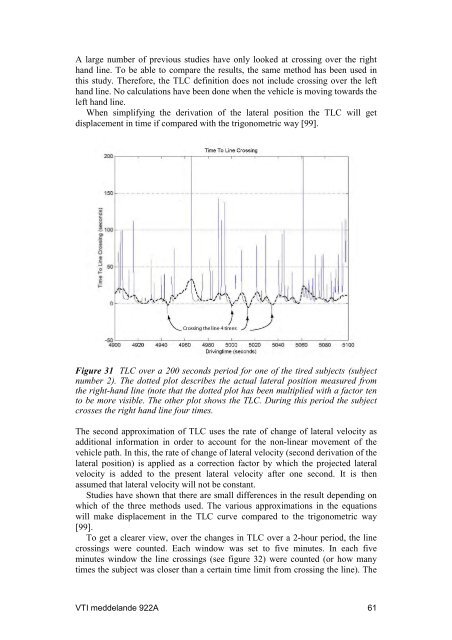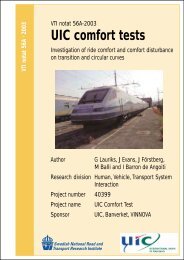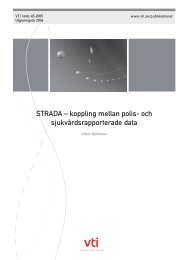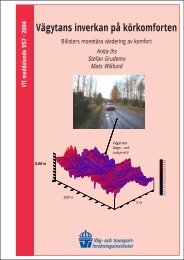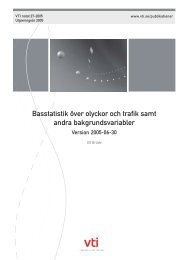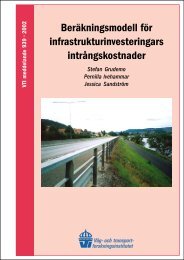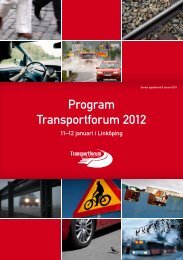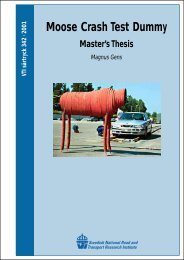Vehicle control and drowsiness - VTI
Vehicle control and drowsiness - VTI
Vehicle control and drowsiness - VTI
- No tags were found...
You also want an ePaper? Increase the reach of your titles
YUMPU automatically turns print PDFs into web optimized ePapers that Google loves.
A large number of previous studies have only looked at crossing over the righth<strong>and</strong> line. To be able to compare the results, the same method has been used inthis study. Therefore, the TLC definition does not include crossing over the lefth<strong>and</strong> line. No calculations have been done when the vehicle is moving towards theleft h<strong>and</strong> line.When simplifying the derivation of the lateral position the TLC will getdisplacement in time if compared with the trigonometric way [99].Figure 31 TLC over a 200 seconds period for one of the tired subjects (subjectnumber 2). The dotted plot describes the actual lateral position measured fromthe right-h<strong>and</strong> line (note that the dotted plot has been multiplied with a factor tento be more visible. The other plot shows the TLC. During this period the subjectcrosses the right h<strong>and</strong> line four times.The second approximation of TLC uses the rate of change of lateral velocity asadditional information in order to account for the non-linear movement of thevehicle path. In this, the rate of change of lateral velocity (second derivation of thelateral position) is applied as a correction factor by which the projected lateralvelocity is added to the present lateral velocity after one second. It is thenassumed that lateral velocity will not be constant.Studies have shown that there are small differences in the result depending onwhich of the three methods used. The various approximations in the equationswill make displacement in the TLC curve compared to the trigonometric way[99].To get a clearer view, over the changes in TLC over a 2-hour period, the linecrossings were counted. Each window was set to five minutes. In each fiveminutes window the line crossings (see figure 32) were counted (or how manytimes the subject was closer than a certain time limit from crossing the line). The<strong>VTI</strong> meddel<strong>and</strong>e 922A 61


